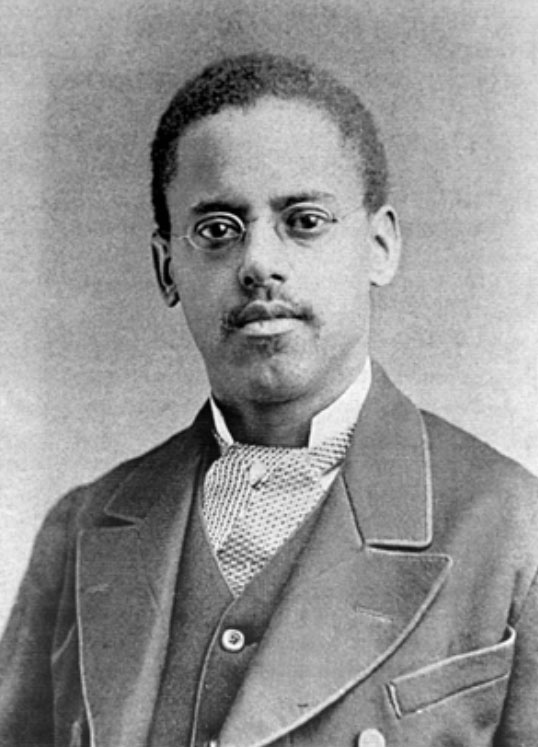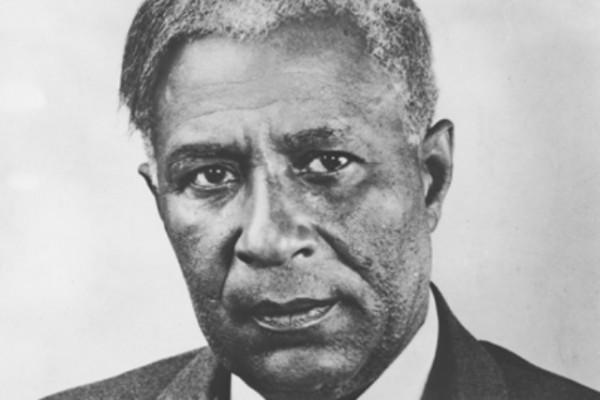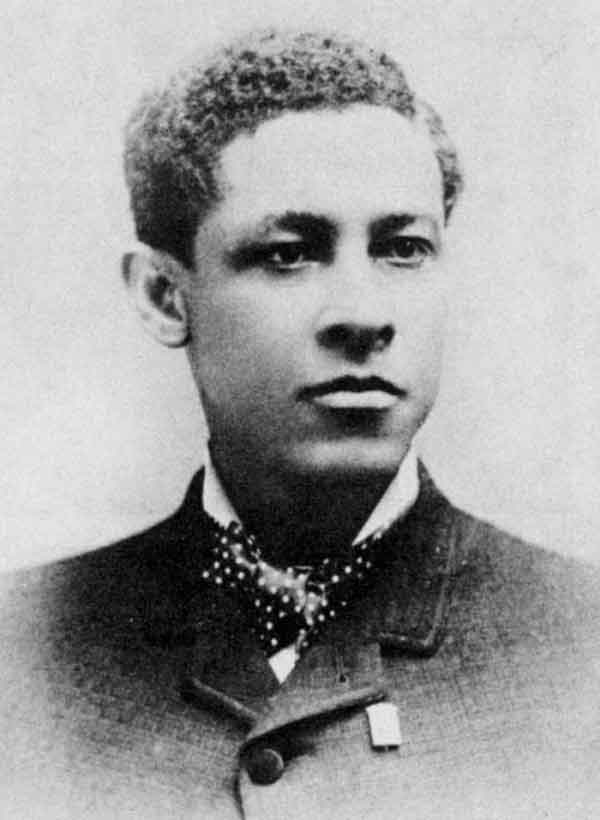Source: Atlantablackstar.com
Lewis Latimer (1848 – 1928)
What He Invented: The Carbon Filament For The Light Bulb.
Why It’s Important: Latimer is one of the greatest inventors of all time. Thomas Edison may have invented the electric lightbulb, but Latimer helped make it a common feature in American households. In 1881 he received a patent for inventing a method of producing carbon filaments, which made the bulbs longer-lasting, more efficient and cheaper.
In 1876, he worked with Alexander Graham Bell to draft the drawings required for the patent of Bell’s telephone.
source: theroot.com
invention.smithsonian.org
Otis Boykin (1920 -1982)
What He Invented: The Artificial Heart Pacemaker Control Unit.
Why It’s Important: Although there were variations to the pacemaker before Boykin’s invention, the modern-day pacemaker would not exist without his work.
Henry Brown
What He Invented: The Modern-Day Fireproof Safe
Why It Is Important: When Henry Brown patented a “receptacle for storing and preserving papers on November 2, 1886″ This was a fire and accident safe container made of forged metal, which could be sealed with a lock and key. Anyone who has ever had important documents stored in a safe and saved in a fire can thank Brown.

Granville T. Woods (1856-1910)
What He Invented: The Multiplex Telegraph.
Why It’s Important: The Multiplex Telegraph was a device that sent messages between train stations and moving trains. His work assured a safer and better public transportation system for the cities of the United States.
Gerald A. Lawson (1940 -2011)
What He Invented: The Modern Home-Video Gaming Console.
Why It’s Important: Anyone who owns a Playstation, Wii or Xbox should know Lawson’s name. He created the first home video-game system that used interchangeable cartridges, offering gamers a chance to play a variety of games and giving video-game makers a way to earn profits by selling individual games, a business model that exists today.
source: theroot.com
Patricia Bath (1942-Present)
What She Invented: The Cataract Laserphaco Probe.
Why It’s Important: Her device used an innovative method of removing cataract lenses with a laser, which was more accurate than the drill-like instruments that were in common use at the time. The New York ophthalmologist’s invention, patented in 1988, helped save the eyesight of millions and even restored sight to people who had been blind for more than 30 years.
source: theroot.com
Garrett Morgan (1877-1963)
What He Invented: The Modern-Day Gas Mask.
Why It’s Important: In 1916, Garrett Morgan made national news by using his gas mask to rescue 32 men trapped during an explosion in an underground tunnel 250 feet beneath Lake Erie. His invention has saved the lives of many firemen, police and soldiers across the world.
source: inventors.about.com
Marc Hannah ( 1956-Present)
What He Invented: 3-D Graphics Technology Used in Films.
Why It’s Important: Anyone awed by the special effects in the films Jurassic Park, Terminator 2 and The Abyss should thank Chicago-native Marc Hannah. The computer scientist is one of the founders, in 1982, of the software firm Silicon Graphics (now SGI), where the special-effects genius developed 3-D graphics technology that would be used in many Hollywood movies.
source: theroot.com
George E. Alcorn (1949-Present)
What He Invented: The Imaging X-Ray Spectrometer
Why It’s Important: The Imaging X-Ray Spectrometer allowed scientists to examine materials that could not be broken down into smaller parts for study, revolutionizing the way NASA was able to conduct research. As a result of the significance of this work, in 1984 he was the NASA Goddard Space Flight Center Inventor of the Year. Two years later he also developed an improved method of fabrication using laser drilling.
Lonnie Johnson (1949-Present)
What He Invented: The Super Soaker
Why It’s Important: The Super Soaker may have been a child’s toy, but it is a great example of an invention with a multimillion-dollar impact. The Super Soaker generated $200 million in annual retail sales and turned Mobile, Ala., native into a millionaire. He’s now using his fortune to develop energy technology.
thecoolmag.com
Frederick M. Jones (1892-1961)
What He Invented: Mobile Refrigeration
Why It’s Important: His invention allowed the transportation of perishable foods such as produce and meats, which changed eating habits across the country. Thermo King, the company he co-founded, became a leading manufacturer of refrigerated transportation. Jones also developed an air-conditioning unit for military field hospitals and a refrigerator for military field kitchens. Jones was awarded over 60 patents during his lifetime.
source: theroot.com
Percy L. Julian (1899-1975)
What He Invented: The Process Of Synthesis.
Why It’s Important: Synthesis was critical to the medical industry as it allowed scientists to create chemicals that were rare in nature. The chemist’s work led to the birth control pill and improvements in the production of cortisone. In 2007 the PBS Nova series created a documentary on Julian’s life calledForgotten Genius.
George R. Carruthers (1939-Present)
What He Invented: The Ultraviolet Camera Spectrograph.
Why It’s Important: The ultraviolet camera spectrograph was a device that traveled to the moon with Apollo 16 in 1972. The camera designed by this Cincinnati-native enabled researchers to study Earth’s atmosphere, providing crucial information on how the world works.
Charles Richard Drew (1904-1950)
What He Invented: The Blood Bank.
Why It’s Important: His research in the field of blood transfusions led to the development of improved techniques for blood storage. He applied his expert knowledge to the development of large-scale blood banks early in World War II. His invention allowed medics to save thousands of lives of the Allied forces.
He directed the blood plasma programs of the United States and Great Britain in World War II, but resigned after a ruling that the blood of African-Americans would be segregated.
Alexander Miles (1838-1918)
What He Invented: The Modern-Day Elevator Design.
Why It’s Important: Although Miles may not have invented the first elevator, his design was very important. Alexander Miles improved the method of the opening and closing of elevator doors; and he developed the closing of the elevator shaft when an elevator was not positioned at a floor. Miles created an automatic mechanism that closed access to the shaft.
His patent is still used for most elevators today because they still work under the basic principle of automated opening and closing doors. His life and his invention helped to break down racial barriers in many ways.
about.com/wisegeek.com
James E. West (1931-Present)
What He Invented: The Electroacoustic Transducer Electret Microphone.
Why It’s Important: Without James West, rappers wouldn’t be able to rock the mic. West, along with Gerhard M. Sessler, helped develop the electroacoustic transducer electret microphone, for which they received a patent in 1962. Their invention was acoustically accurate, lightweight and cost effective. Ninety percent of microphones in use today — including those in telephones, tape recorders and camcorders — are based on their original concept.
source: theroot.com
Arthur Zang (1988-Present)
What He Invented: The Cardiopad.
Why It’s Important: The 24 year-old Cameroonian engineer, has invented the Cardopad, a touch-screen medical tablet that enables heart examinations such as the electrocardiogram (ECG) to be performed at remote, rural locations while the results of the test are transferred wirelessly to specialists who can interpret them. The device spares African patients living in remote areas the trouble of having to travel to urban centers to seek medical examinations.
Jan Matzeliger (1852-1889)
What He Invented: A Shoe-Lasting Machine.
Why It’s Important: Marzeliger, who was from Suriname, invented a shoe-lasting machine that increased the availability of shoes and decreased the price of footwear. Matzeliger’s shoe-lasting machine increased shoe production tremendously. The result was the employment of more unskilled workers and the proliferation of low-cost, high-quality footwear for people around the world.
Elijah McCoy (1844-1929)
What He Invented: A Railroad Lubrication Machine.
Why It’s Important: McCoy, who was from Canada, invented a lubrication device to make railroad operation more efficient. After studying the inefficiencies inherent in the existing system of oiling axles, McCoy invented a lubricating cup that distributed oil evenly over the engine’s moving parts. He obtained a patent for this invention in 1872, which allowed trains to run continuously for long periods of time without pausing for maintenance.
Ludwick Marishane (1991-Present)
What He Invented: DryBath
Why It’s Important: At age 21 Ludwick Marishane developed a formula that people use to bathe without water. DryBath is a lotion that cleanses cheaply and easily — especially important for the 2.5 billion people worldwide who lack proper access to water and sanitation.
DryBath has the same effect as an antibacterial cleanser, but it’s odorless and creates a biodegradable film that cleans and moisturizes the skin. Five years later, it’s now available on the market. Marishane has since enrolled at the University of Cape Town in South Africa and was named the Global Student Entrepreneur of the Year in 2011.

























